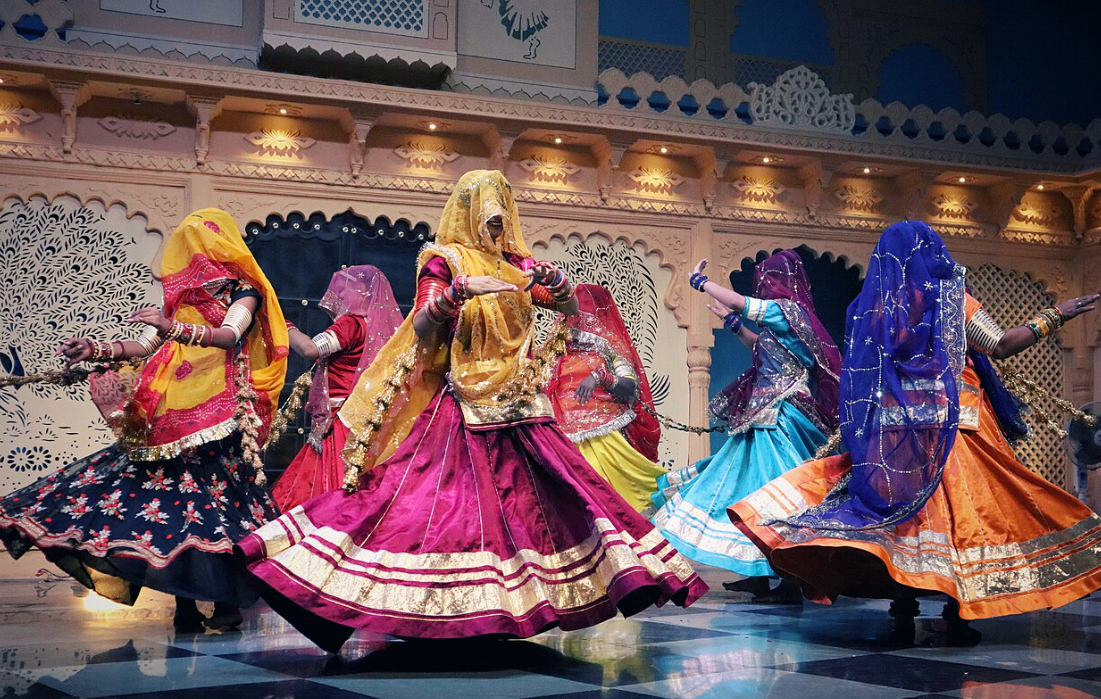Ghoomar Dance | 21 Nov 2025
Why in News?
The city of Jaipur launched its first-ever state-level Ghoomar Festival, uniting women across the state to celebrate Rajasthan’s iconic folk dance tradition.
- It was also organised simultaneously in all seven divisional headquarters of Rajasthan, making it a state-level celebration of the Ghoomar dance form.
Key Points
- Ghoomar is traditionally performed to celebrate auspicious occasions, such as marriages, festivals and the arrival of a new bride.
- It symbolises joy, grace and womanhood, and is considered a ritual dance that brings prosperity and good fortune to the household.
- Ghoomar is recognised as an important part of Rajasthan’s intangible cultural heritage.
- There is no fixed date — it is performed year-round at social, ceremonial and festive events. The dancers wear colourful ghaghra-cholis and odhnis, and the swirling movement of the skirts is central to its visual identity.
- Ghoomar originated with the Bhil tribe, who performed it as part of their rituals honouring the Goddess Saraswati and local deities. Later, it was adopted and refined by the Rajput royal households, where it evolved into a graceful, court-like dance form.
- Traditionally, Ghoomar was performed in the evening, where women (especially newlywed brides) danced in circles to mark their acceptance into the family and the community.

